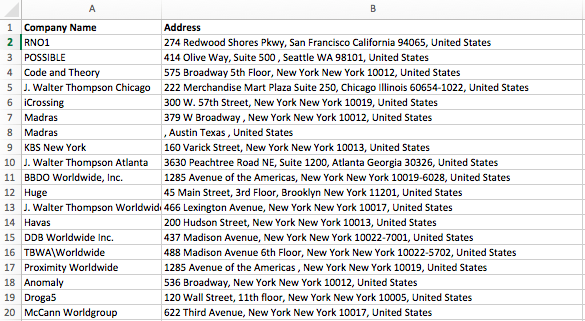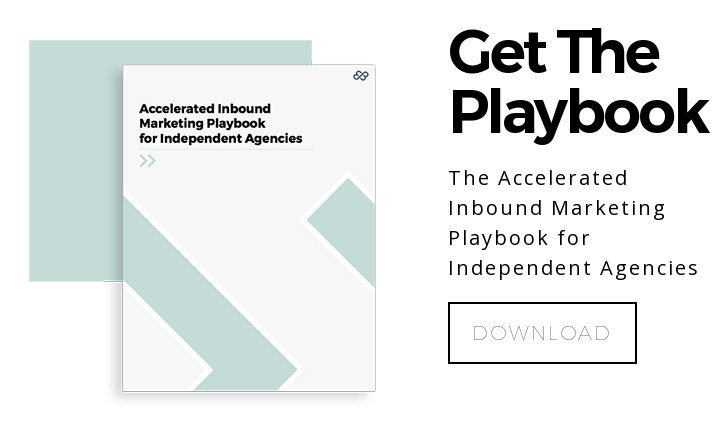The Exact Process We Use To Target 130,000 Agency Decision-Makers Like You on Facebook

You know that your company does truly great work. The level of expertise and quality of service you could provide to clients is far higher than what they’re getting right now, and you could prove it… if only you could get in front of them.
In today’s oversaturated media environments, even excellent companies find themselves having to claw their way to attention from potential clients. Facebook, Twitter, and LinkedIn are fickle mistresses, and the demise of organic reach creating a tsunami of promoted ads and content. Managing marketing budgets efficiently can be hugely frustrating.
That’s where we come in.
We believe strongly in the ability of social media ads to generate leads, mostly because we have figured out a way to make them work hard for us.
Most recently, our hacker approach helped us launch a campaign that reached 15,741 agency decision-makers (our core target) and generate 24 highly-qualified contacts on Facebook for $884. And because we’re all about sharing knowledge—here’s how we did it.
1. Create a Specific Account-Based Custom Audience
You may be familiar with Dun & Bradstreet, the data company that tracks businesses across the country. Every company worth its salt will be registered with Dun & Bradstreet in some capacity. What you may not know is that D&B has a partnership with Facebook that gives advertisers some excellent tools to target employees of specific companies in the D&B database. Based on a list of businesses that the advertiser provides, D&B can create a Custom Audience of Facebook users employed by those companies. Thanks to D&B’s extensive taxonomy, the advertiser can then filter the Facebook audience based on department, job title, and more.
This is quite a feature, particularly for companies like ours that pursue clients within a specific niche. The first big step, of course, is getting your hands on the list of companies that you want to target. We explored a dozen or so sales intelligence tools that might provide us the data we were looking for. Ultimately, Redbooks seemed to have the comprehensive list of agencies we were looking for but cost $6,000 for an annual subscription. We preferred not to spend so much on an annual subscription when we only needed a one-and-done list, so we put our detective hats on. We scoured the internet for lists of agencies, and ended up on AdForum. AdForum’s public-facing database of agencies in the United States was just the treasure chest we hoped to find—but how could we get this list of 6,000 agencies into a spreadsheet? Fortunately, we know some smart folks good at “scraping” data, and $50 to an Upwork freelancer later, we had the AdForum database in spreadsheet list form.

2. Layer In B2B Demographic Filters
Once Dun & Bradstreet creates your account-based audience on Facebook (or Twitter or LinkedIn, based on your budget and goals), the next step is to narrow the scope of your campaign so that you’re only paying to get your pitches in front of your target personas, the folks who you usually sell to.
For us, this meant layering filters based on department and job title onto our big group of potential targets. Decision-makers on the sales and marketing teams are who we deal with on a day-to-day basis, so we filtered our Custom Audience group accordingly. With the Dun & Bradstreet B2B taxonomy already available within Facebook, this was a piece of cake. Our potential audience ended up being 130,000 agency decision-makers.
3. Hit Them With Relevant Content
Of course, the most important part of this whole process is getting the right message in front of the right person at the right time. Turn to your content marketing strategy for guidance on what you should be promoting. (Or, if your agency doesn’t doesn’t have one, start here.) Pull the blog posts, whitepapers, infographics, or other collateral you think will grab the attention of the users in your new Custom Audience. Then create your Facebook ads, driving clicks to your content. And—drum roll please—you’re now ready to launch your account-based marketing campaign.
The confidence that comes with creating a Custom Audience based on reliable Dun & Bradstreet business data may transform the way that you look at advertising on social media platforms. And we hope that our suggestions for how to get to that point without breaking the bank will help you move towards implementing this type of process—and connecting with those potential clients you’ve been dreaming about.



